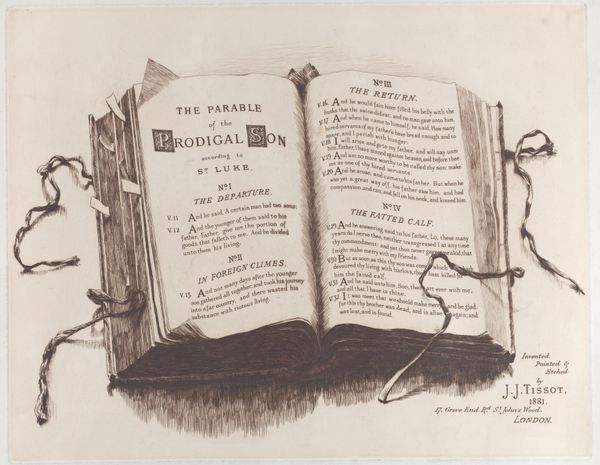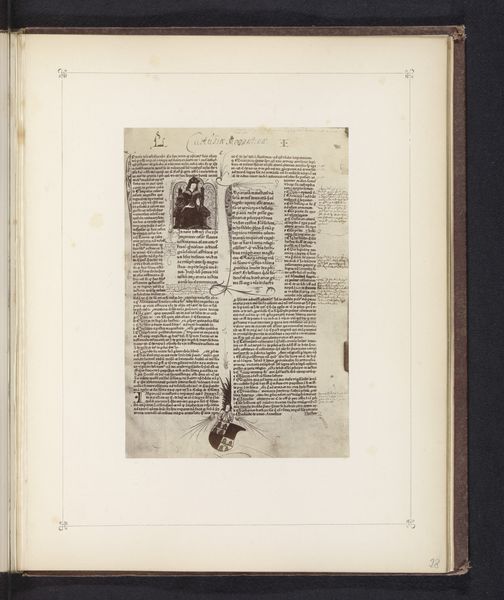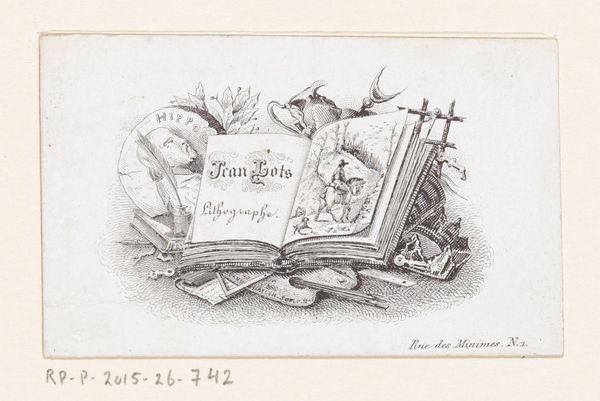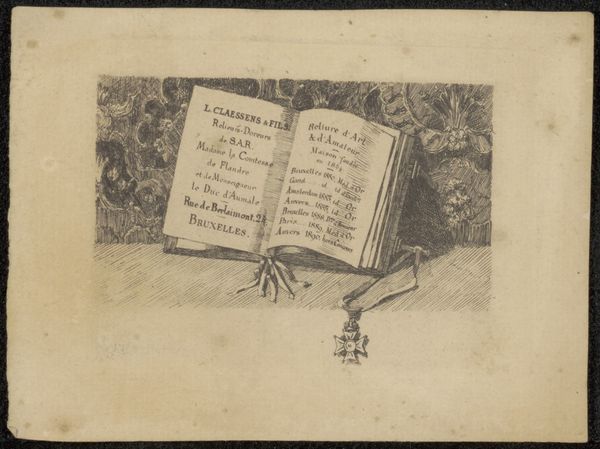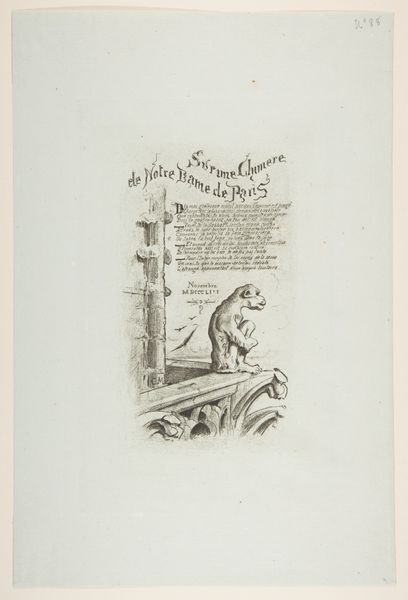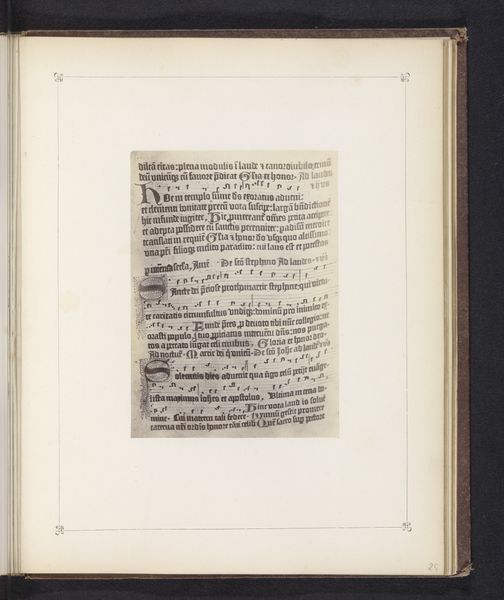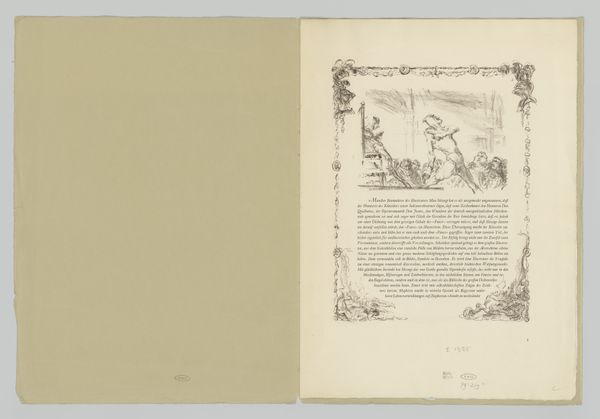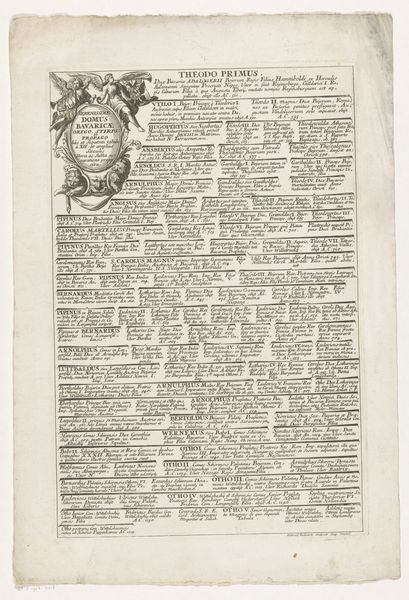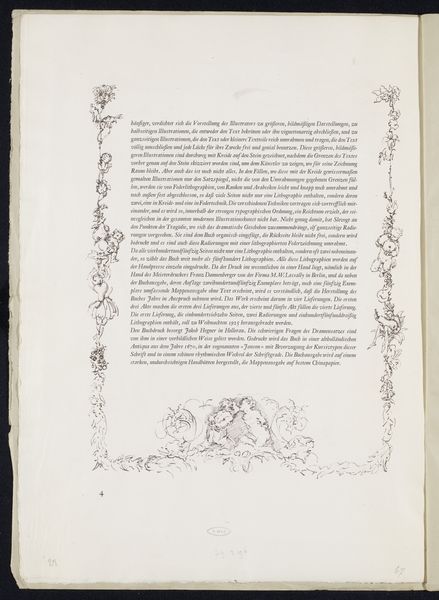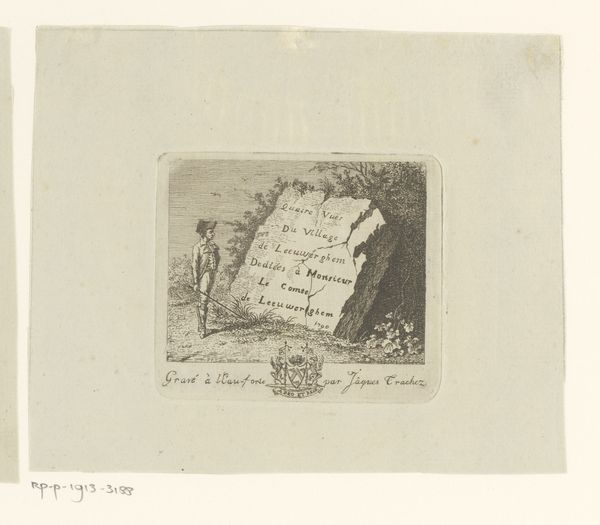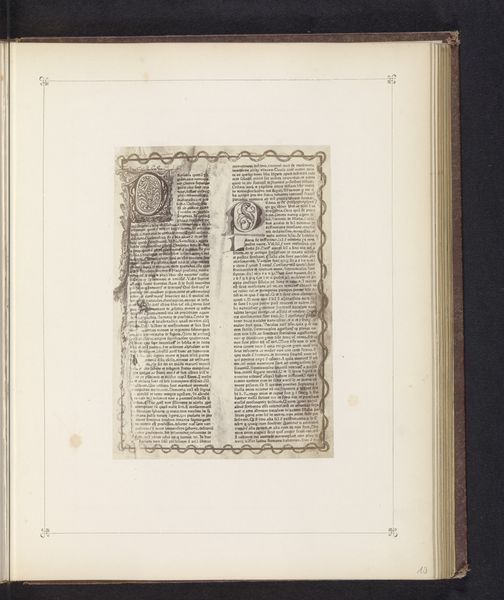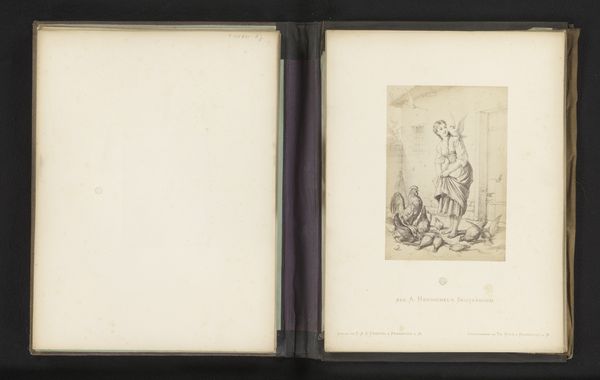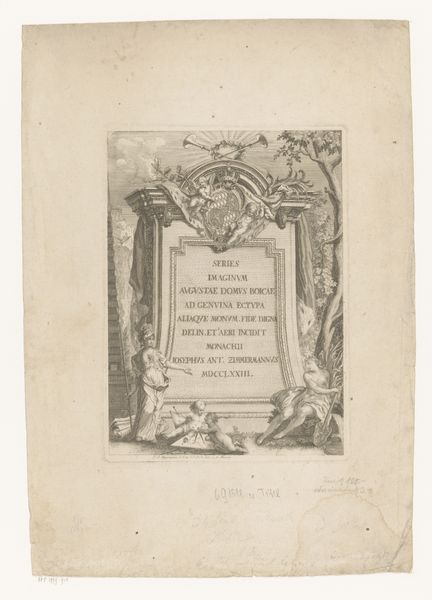
Dimensions: plate: 31 x 37.4 cm (12 3/16 x 14 3/4 in.) sheet: 50.5 x 61.8 cm (19 7/8 x 24 5/16 in.)
Copyright: CC0 1.0
Curator: James Tissot, a French artist active in the late 19th century, created this etching titled "Titlepage from The Parable of the Prodigal Son." Notice the open book as the central motif. Editor: It feels like a memory, doesn't it? The stark lines, the almost dreamlike quality of the ink—it's like rifling through an old family Bible. Curator: The composition is quite intriguing. Tissot has employed a drypoint technique, giving a somewhat velvety texture to the lines, which provides an interesting contrast to the sharp legibility of the text. Editor: And the placement of the frayed cords—they look like loose ends, threads of stories left untold, or perhaps the wanderings of the prodigal himself. Curator: Indeed. The text itself, divided into chapters such as "The Departure" and "The Return", functions as both subject and structure. Semiotically, it collapses narrative into image. Editor: It's fascinating how he uses a literal book to explore themes of sin, redemption, and familial love. I feel like I've uncovered a hidden treasure. Curator: A fitting sentiment, given the depth of Tissot's visual and conceptual approach. Editor: Absolutely. This piece invites us to not just see, but also to contemplate and feel the weight of these timeless stories.
Comments
No comments
Be the first to comment and join the conversation on the ultimate creative platform.
